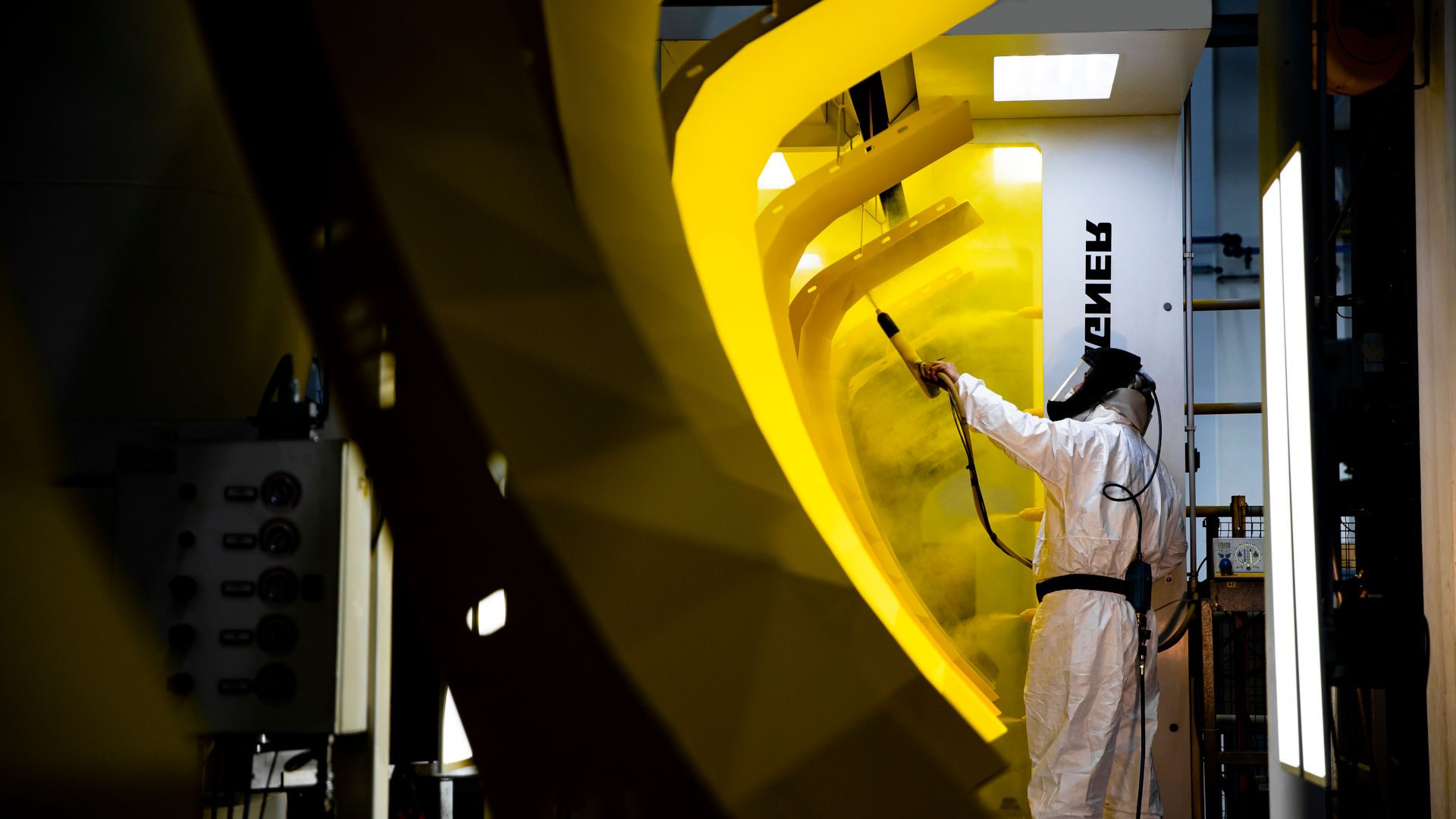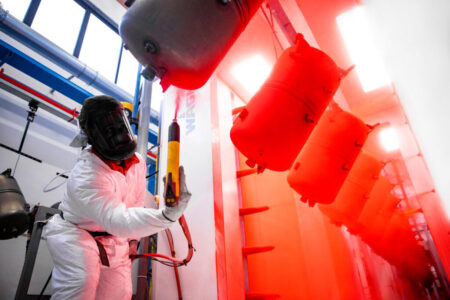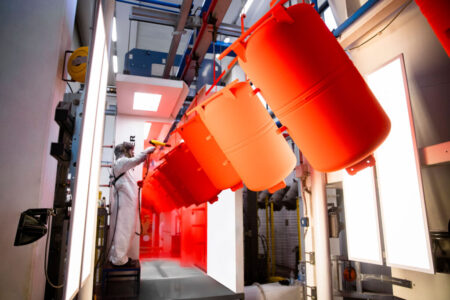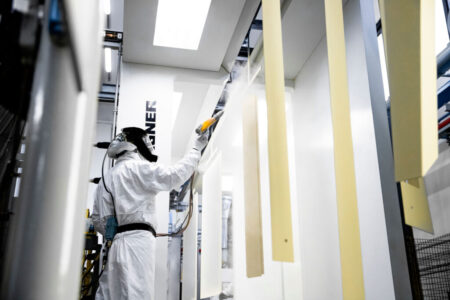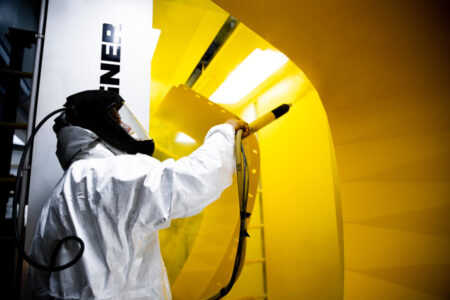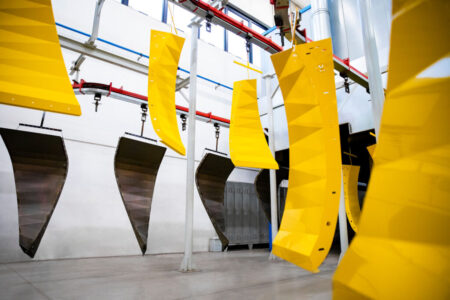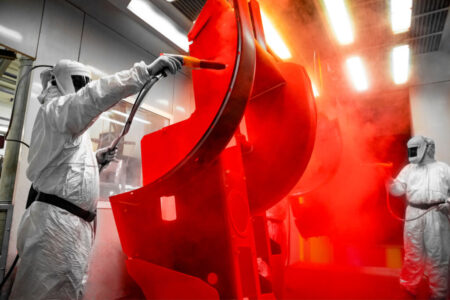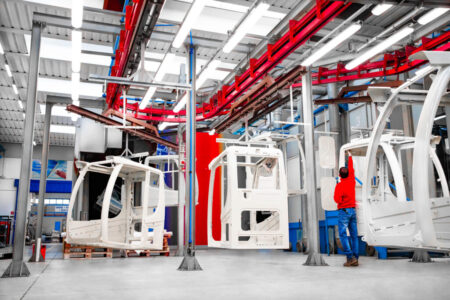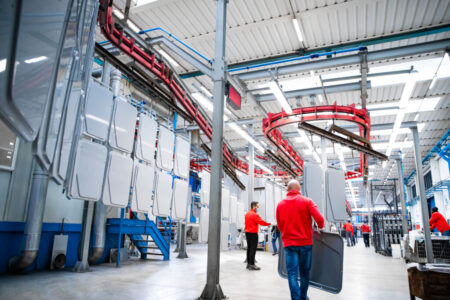that perfects metal items
Powder coating is a surface finishing treatment characterised by the application of thermosetting powder paints on metal parts using electrostatic systems.
Our powder coating treatment is carried out on four production lines, which allow a high degree of flexibility in the choice of treatments to be carried out, depending on the type and size of the items.
The application is carried out with automatic, manual and/or combined systems on the latest generation of WAGNER spray booths, which allow for the optimisation of the aesthetic performance of the paints applied.
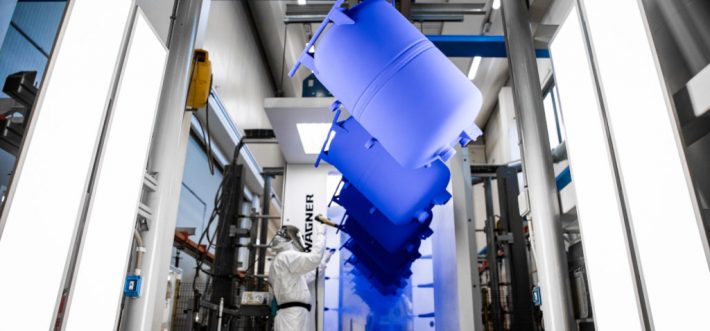
Our strengths include Green Technology, a nanotechnological Zirconium Based conversion process, which guarantees high surface conversion performance on both steel and iron substrates and on aluminium and alloys.
The attention to detail that distinguishes our company is also reflected in the powder coating: each line is cleaned, tidied and checked daily so that nothing can affect the quality of the treatment and service we provide.
In addition, the size of the lines and spray booths, both manual and automatic, allows us to treat even the largest items, belonging to the most diverse markets.

What is powder coating?
Information and characteristics of our powder coating
The principle of powder coating is fundamentally different from that of liquid coating.
With powder coating, the articles to be treated are covered with powder coating based on synthetic resins, applied with manual or automatic electrostatic guns.
Once covered with the powder coating, the particles enter the oven where, at a temperature of between 180 and 200 degrees, the coating first melts and then polymerises, causing it to adhere permanently to the surface of the article.
It should be borne in mind that one of the most important steps in this process is prior to the actual painting process: in order for the powder to deposit perfectly, it is necessary to ensure that the article is cleaned and pre-treated in the best possible way, using techniques such as degreasing, phosphating, the aforementioned Green Technology and rinsing with tap water and demineralised water.
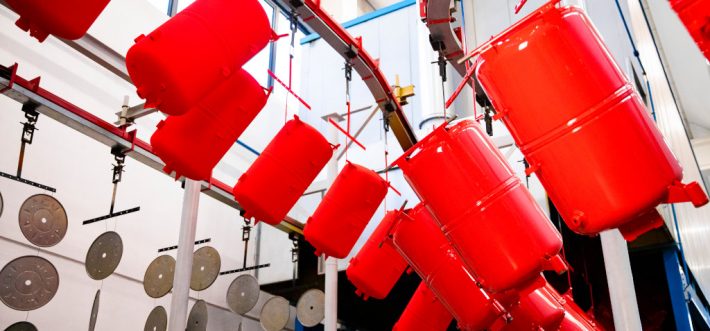
The adoption and correct execution of phosphating, in particular, is a determining factor in the success of paint adhesion and corrosion resistance.
Phosphating is a chemical process by which a protective crystalline layer of phosphate is deposited on the metal surface, giving it high resistance to rust, deformation and improving coat adhesion.
In our automated lines, we apply tricationic phosphating by spraying; this is an essential step for all those products that could be affected by water or deteriorate over time, such as the automotive sector, earth-moving machinery and materials, agricultural vehicles and furniture.
For a more in-depth look at this type of industrial coating, we refer you to the following article from our blog: “History of powder coating: from the mid-20th century to the present day“.
| 4 production lines | |
| WAGNER manual and automatic booths | |
| Maximum dimensions of articles: 4 x 2,20 meter, with a weight of up to 800 kg | |
| Green Technology, respecting the environment | |
| Constant maintenance and cleaning |
| 4 production lines | |
| WAGNER manual and automatic booths | |
| Maximum dimensions of articles: 4 x 2,20 meter, with a weight of up to 800 kg | |
| Green Technology, respecting the environment | |
| Constant maintenance and cleaning |
Powder coating is a surface finishing treatment characterised by the application of thermosetting powder paints on metal parts using electrostatic systems.
Our powder coating treatment is carried out on four production lines, which allow a high degree of flexibility in the choice of treatments to be carried out, depending on the type and size of the items.
The application is carried out with automatic, manual and/or combined systems on the latest generation of WAGNER spray booths, which allow for the optimisation of the aesthetic performance of the paints applied.

Our strengths include Green Technology, a nanotechnological Zirconium Based conversion process, which guarantees high surface conversion performance on both steel and iron substrates and on aluminium and alloys.
The attention to detail that distinguishes our company is also reflected in the powder coating: each line is cleaned, tidied and checked daily so that nothing can affect the quality of the treatment and service we provide.
In addition, the size of the lines and spray booths, both manual and automatic, allows us to treat even the largest items, belonging to the most diverse markets.

What is powder coating?
Information and characteristics of our powder coating
The principle of powder coating is fundamentally different from that of liquid coating.
With powder coating, the articles to be treated are covered with powder coating based on synthetic resins, applied with manual or automatic electrostatic guns.
Once covered with the powder coating, the particles enter the oven where, at a temperature of between 180 and 200 degrees, the coating first melts and then polymerises, causing it to adhere permanently to the surface of the article.
It should be borne in mind that one of the most important steps in this process is prior to the actual painting process: in order for the powder to deposit perfectly, it is necessary to ensure that the article is cleaned and pre-treated in the best possible way, using techniques such as degreasing, phosphating, the aforementioned Green Technology and rinsing with tap water and demineralised water.

The adoption and correct execution of phosphating, in particular, is a determining factor in the success of paint adhesion and corrosion resistance.
Phosphating is a chemical process by which a protective crystalline layer of phosphate is deposited on the metal surface, giving it high resistance to rust, deformation and improving coat adhesion.
In our automated lines, we apply tricationic phosphating by spraying; this is an essential step for all those products that could be affected by water or deteriorate over time, such as the automotive sector, earth-moving machinery and materials, agricultural vehicles and furniture.
For a more in-depth look at this type of industrial coating, we refer you to the following article from our blog: “History of powder coating: from the mid-20th century to the present day“.

